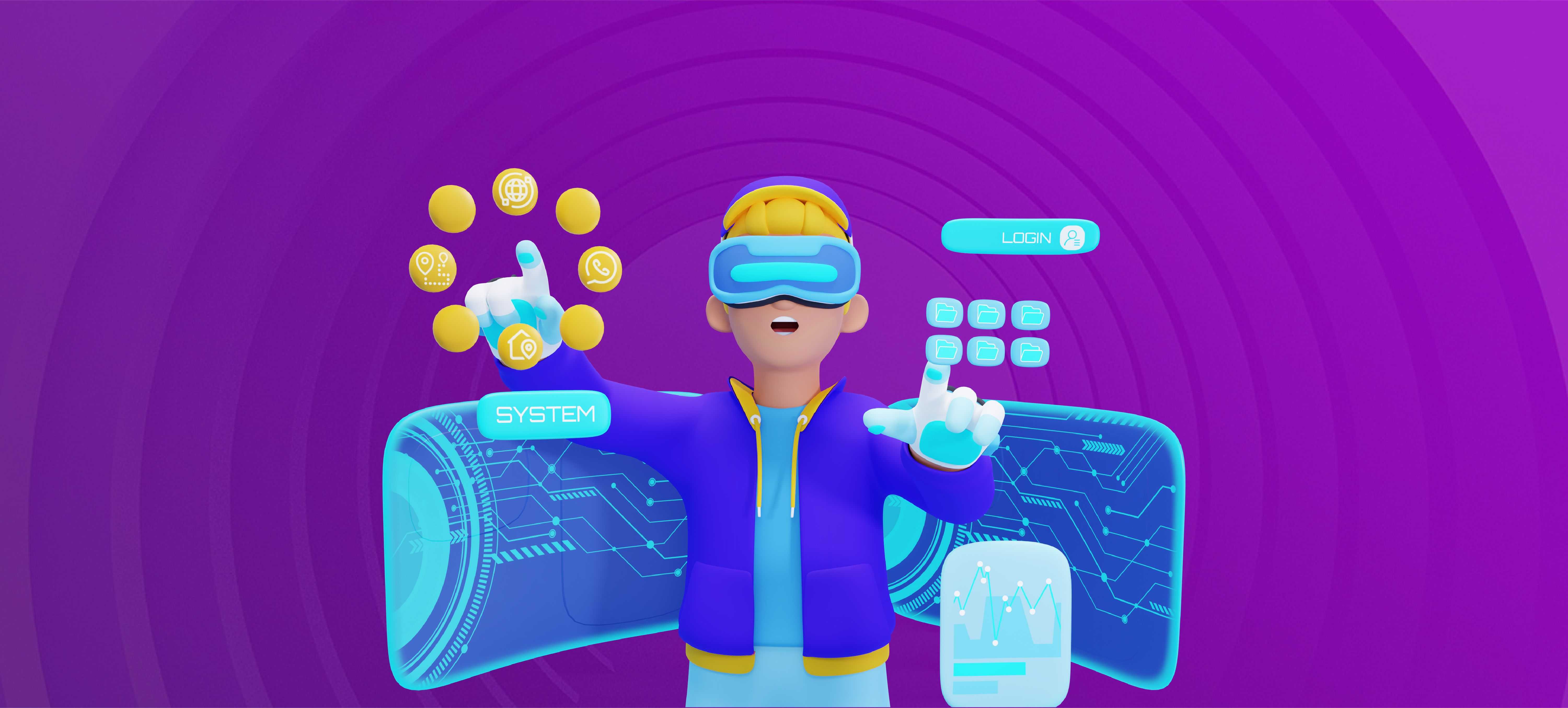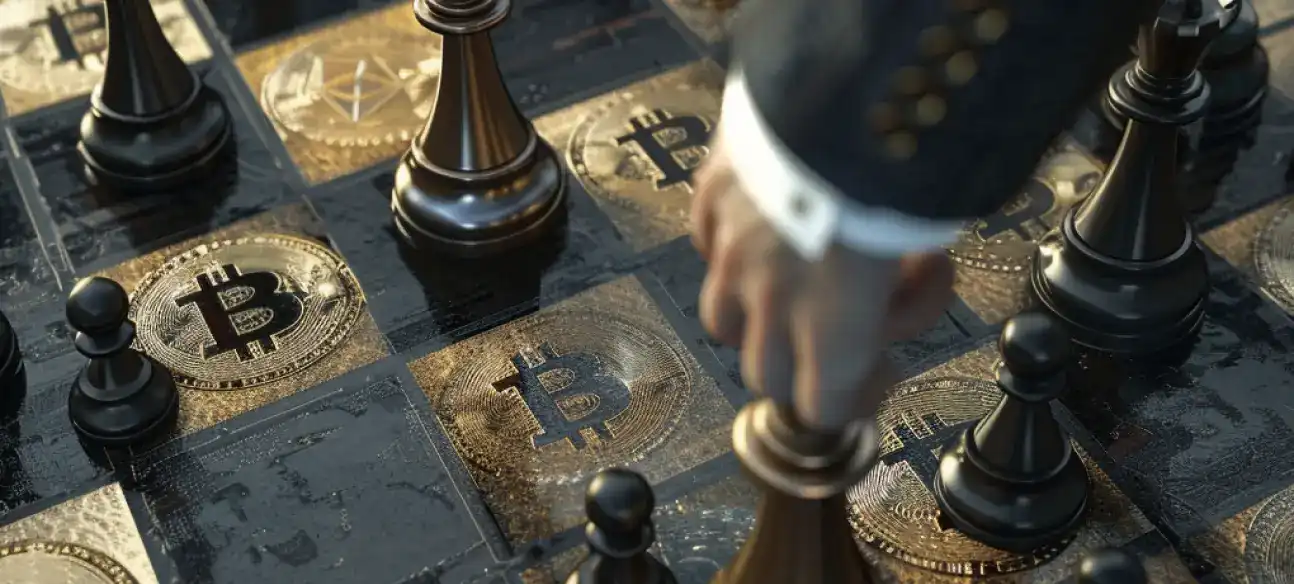
Cross-Chain NFT Marketplace: A Comprehensive Guide for beginner’s
Table of Contents
Over the past few years, the crypto world has evolved so much that we now not only have the mainstream and more commonly known blockchain networks like Bitcoin and Ethereum but also many more blockchain networks, each with their features, specialty consensus mechanisms, etc. With the growing popularity of these new networks and the world of the crypto community’s interest in NFTs, a looming question has been how do we “connect” all these chains. And also, how do we incorporate NFTs on a chain with other chains?
We have been getting some answers in the name of Cross-Chain marketplaces. In this article, we’ll guide you on what Cross-Chain technology is and how it is revolutionizing the NFT Marketplace development.
First, let’s discuss the terms in “Cross-Chain NFT Marketplace.”
What is an NFT?
An NFT, like cryptocurrencies, is a token on a blockchain, but it is Non-Fungible. It is a form of digital asset. NFTs cannot be exchanged on a like-for-like basis, have verifiable proof of authenticity, and can be bought and sold on a specialized NFT marketplace. You can read more about NFTs (Non-Fungible Tokens), how they work, and what makes them valuable in our blog about doubts and questions on NFTs.
What is an NFT Marketplace?
As the name suggests, NFT Marketplace is where you buy or sell NFTs. It is a platform where one can store their NFTs, list them to be sold, or bid on to buy them. The purchases are made by paying for the NFT using the cryptocurrency of the chain the NFT is listed on. For example, if an NFT is listed on Ethereum Blockchain, you can buy it using Ethers. It is important to note here that in a traditional NFT Marketplace, you cannot pay in another cryptocurrency, let’s say in BTC, to buy an NFT on Ethereum Network. To do so, you would have to use an Exchange to convert your BTC to ETH first and then go on to buy the NFT.
This brings us to our problem of interoperability, or lack thereof. Lack of interoperability is a significant issue when it comes to blockchain networks, and NFTs in particular. The many different blockchains need a way to communicate with each other. A solution to this would be a mechanism using which blockchains can be connected. That brings us to the Cross-Chain protocol.
What is Cross-Chain NFT?
Cross-chain is a protocol that introduces interoperability in the crypto world. It allows users to exchange data between chains and networks, communicate across the chains, and increases the capacity of two non-related chains to work together. To quote Chain Link,
“The Cross-Chain Interoperability Protocol (CCIP) is a blockchain-agnostic, open-source standard for cross-chain communication involving arbitrary messaging and token transfers.”
As the protocol allows token transferring, one of its most prominent use cases is an NFT Marketplace which enables the exchange of tokens across different blockchain networks. So a cross chain NFT is a marketplace that provides interoperability between other chains to buy and sell NFTs.
How does Cross-Chain NFT Marketplace work?
Cross-chain NFT Marketplaces have a set of principles or functionalities that allows them to exchange NFTs across different blockchain networks, namely Atomic Swap, relay, and simplified payment verification. Let us see what they are one by one.
Atomic Swap
Atomic Swap is a method that uses smart contracts to transfer between two personal crypto wallets. In an Atomic Swap, the transaction and all its parameters are verified before it happens. If the verification process is positive, the transfer is made, else is not made. It uses a hash key lock and time lock to ensure both parties (crypto wallets) meet the requirements within a timeframe. Users can exchange between 7000 plus cryptocurrencies using Atomic Swap.
Relay
Relau is another method that uses smart contracts. Where atomic swap is used to transfer the tokens, the relay is used to handle information exchange between various blockchains. Proof of Stake is used to reach a consensus on the host chain of it.
Simplified Payment Verification
Simplified Payment Verification, or SVP, allows validation and verification without downloading the entire blockchain. In an exchange between two blockchain networks, one does not need to download data from both networks to verify. This makes Cross Chain NFT Marketplace feasible.
Advantages of Cross Chain NFT Marketplace
Interoperability
In a cross-chain NFT Marketplace, one can buy or sell NFTs using any cryptocurrency regardless of the NFT listed chain.
Wide Range of Collection
Holding cryptocurrency of only one type does not limit access to NFTs on other chains. Hence, the marketplace enables users to buy from a broader range of collections, thus easing convenience.
Scalability
The marketplace is not limited to a few networks only and can be scaled for more networks. Moreover, SPV allows for quicker transactions.
Multiwallet
It allows users to split their assets between different wallets and portfolios and diversify their investments.
High ROI
Various assets are accepted from different chains, thus increasing the audience. This makes the owner or developer of the cross chain NFT Marketplace open to a higher ROI.
Increased Liquidity
The ability of the best NFT Marketplace to buy or sell NFTs using different cryptocurrencies increases the liquidity of the additional assets.
Conclusion
Cross-chain NFT marketplaces are significant to the expansion of the NFT space. It eliminates the need to switch between different chains to find an NFT or exchange cryptocurrencies to be able to pay for it. Cross Chain NFT Marketplace development can benefit the investors as it promises a broader audience, scalability, increased liquidity and higher ROI. Several existing marketplaces like Axelar Sea, MetaNFT, and Agoran have also integrated cross-chain technology into their existing platforms,
If you want to build your platform, we here at InvoBlox would be happy to provide you with experts you can consult with or hire as a team of developers.
Table of Contents
Over the past few years, the crypto world has evolved so much that we now not only have the mainstream and more commonly known blockchain networks like Bitcoin and Ethereum but also many more blockchain networks, each with their features, specialty consensus mechanisms, etc. With the growing popularity of these new networks and the world of the crypto community’s interest in NFTs, a looming question has been how do we “connect” all these chains. And also, how do we incorporate NFTs on a chain with other chains?
We have been getting some answers in the name of Cross-Chain marketplaces. In this article, we’ll guide you on what Cross-Chain technology is and how it is revolutionizing the NFT Marketplace development.
First, let’s discuss the terms in “Cross-Chain NFT Marketplace.”
What is an NFT?
An NFT, like cryptocurrencies, is a token on a blockchain, but it is Non-Fungible. It is a form of digital asset. NFTs cannot be exchanged on a like-for-like basis, have verifiable proof of authenticity, and can be bought and sold on a specialized NFT marketplace. You can read more about NFTs (Non-Fungible Tokens), how they work, and what makes them valuable in our blog about doubts and questions on NFTs.
What is an NFT Marketplace?
As the name suggests, NFT Marketplace is where you buy or sell NFTs. It is a platform where one can store their NFTs, list them to be sold, or bid on to buy them. The purchases are made by paying for the NFT using the cryptocurrency of the chain the NFT is listed on. For example, if an NFT is listed on Ethereum Blockchain, you can buy it using Ethers. It is important to note here that in a traditional NFT Marketplace, you cannot pay in another cryptocurrency, let’s say in BTC, to buy an NFT on Ethereum Network. To do so, you would have to use an Exchange to convert your BTC to ETH first and then go on to buy the NFT.
This brings us to our problem of interoperability, or lack thereof. Lack of interoperability is a significant issue when it comes to blockchain networks, and NFTs in particular. The many different blockchains need a way to communicate with each other. A solution to this would be a mechanism using which blockchains can be connected. That brings us to the Cross-Chain protocol.
What is Cross-Chain NFT?
Cross-chain is a protocol that introduces interoperability in the crypto world. It allows users to exchange data between chains and networks, communicate across the chains, and increases the capacity of two non-related chains to work together. To quote Chain Link,
“The Cross-Chain Interoperability Protocol (CCIP) is a blockchain-agnostic, open-source standard for cross-chain communication involving arbitrary messaging and token transfers.”
As the protocol allows token transferring, one of its most prominent use cases is an NFT Marketplace which enables the exchange of tokens across different blockchain networks. So a cross chain NFT is a marketplace that provides interoperability between other chains to buy and sell NFTs.
How does Cross-Chain NFT Marketplace work?
Cross-chain NFT Marketplaces have a set of principles or functionalities that allows them to exchange NFTs across different blockchain networks, namely Atomic Swap, relay, and simplified payment verification. Let us see what they are one by one.
Atomic Swap
Atomic Swap is a method that uses smart contracts to transfer between two personal crypto wallets. In an Atomic Swap, the transaction and all its parameters are verified before it happens. If the verification process is positive, the transfer is made, else is not made. It uses a hash key lock and time lock to ensure both parties (crypto wallets) meet the requirements within a timeframe. Users can exchange between 7000 plus cryptocurrencies using Atomic Swap.
Relay
Relau is another method that uses smart contracts. Where atomic swap is used to transfer the tokens, the relay is used to handle information exchange between various blockchains. Proof of Stake is used to reach a consensus on the host chain of it.
Simplified Payment Verification
Simplified Payment Verification, or SVP, allows validation and verification without downloading the entire blockchain. In an exchange between two blockchain networks, one does not need to download data from both networks to verify. This makes Cross Chain NFT Marketplace feasible.
Advantages of Cross Chain NFT Marketplace
Interoperability
In a cross-chain NFT Marketplace, one can buy or sell NFTs using any cryptocurrency regardless of the NFT listed chain.
Wide Range of Collection
Holding cryptocurrency of only one type does not limit access to NFTs on other chains. Hence, the marketplace enables users to buy from a broader range of collections, thus easing convenience.
Scalability
The marketplace is not limited to a few networks only and can be scaled for more networks. Moreover, SPV allows for quicker transactions.
Multiwallet
It allows users to split their assets between different wallets and portfolios and diversify their investments.
High ROI
Various assets are accepted from different chains, thus increasing the audience. This makes the owner or developer of the cross chain NFT Marketplace open to a higher ROI.
Increased Liquidity
The ability of the best NFT Marketplace to buy or sell NFTs using different cryptocurrencies increases the liquidity of the additional assets.
Conclusion
Cross-chain NFT marketplaces are significant to the expansion of the NFT space. It eliminates the need to switch between different chains to find an NFT or exchange cryptocurrencies to be able to pay for it. Cross Chain NFT Marketplace development can benefit the investors as it promises a broader audience, scalability, increased liquidity and higher ROI. Several existing marketplaces like Axelar Sea, MetaNFT, and Agoran have also integrated cross-chain technology into their existing platforms,
If you want to build your platform, we here at InvoBlox would be happy to provide you with experts you can consult with or hire as a team of developers.
FAQS
A cross-chain NFT is a non-fungible token that operates on multiple blockchain networks, allowing it to be used and transferred across different ecosystems. It increases interoperability and accessibility for NFTs.
Some popular NFT marketplaces include:
- OpenSea
- Rarible
- SuperRare
- Foundation
- KnownOrigin
- Mintable
Each has its unique features and focuses on different types of NFTs. The best marketplace depends on your specific requirements and preferences.





